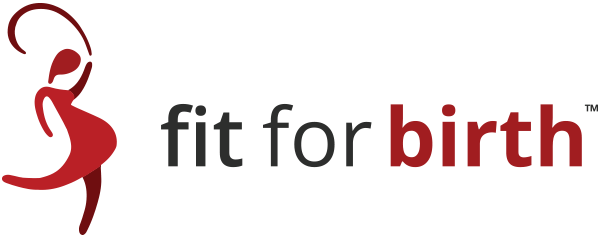
Now that Taylor has finally put Travis Kelce #OnTheMap, America’s sweethearts are the perfect couple to bring awareness to childbirth, if she becomes pregnant.🤰🏼😉 (For better or for worse, people are now making these inquiries on the internet, since she is of childbearing age and hasn’t had children thus far.) And so, for those who’d like to have a little fun in learning childbirth, we’re ready with a 4-step plan, so that Traylor—as the two are now called—can put a baby in their blank space…
Since Taylor is right at that age where pregnancy often becomes more of a consideration for many women, it seems that the planets and the fates and all the stars aligned. Born Dec. 13, 1989, in West Reading, PA, she is the same age as Travis, an NFL football player, who was born October 5 in that same year.
Step 1: Tend to your health & fitness
Being fit and healthy is so important because childbirth labor & delivery will be the single most challenging physical and emotional event in Taylor’s life. Think about the fact that a marathon takes the average woman about 4 or 5 hours to complete, whereas a first time labor & delivery will last 12-24 hours (2min video comparing labor to a marathon). In order to train for the grueling task of a marathon, most coaches suggest training for 4-5 months in advance, so that the body and mind learn to endure the stress.
It would be ideal if Taylor shifted her exercise routine during pregnancy, specifically to train for the mental intensity of labor.
Thank goodness that Taylor does not have the typical sedentary lifestyle, and is already accustomed to an intense fitness routine. However, as pregnancy unfolds, she’ll want to use the opportunity to take a few additional steps toward her health. This could be in the form of anything that feels most important or most fun for her to implement, including nutrition, breathwork, meditation, continuing to avoid toxic ink tattoos, and of course avoiding staying out too late.
Step 2: Decide how you want to birth
In America today, 99% of women give birth in hospitals, even though the World Health Organization has confirmed that it’s actually safer to give birth under the care of a midwife. This can happen at home or in a dedicated birthing center, and it’s ideal if this location is indeed near enough to a hospital so that a transfer can be made, when on the very rare occasion this would be necessary.
Taylor needs to remember that there are players and there is a game. Childbirth is a business, and one that has a fierce history of drama. For example, the rate of C-section in American hospitals is around 33%, compared to home birth transfer rate of less than 10%. That, together with the fact that C-sections are disproportionately happening between the hours of 9-5pm indicate just how over-prescribed these kinds of treatments can be once inside hospital walls.
Remember, doctors are trained into a culture of medicines and surgery, whereas midwives & birthing centers are trained into a culture of natural birth, with minimal intervention. Just as you wouldn’t go to a chiropractor asking for acupuncture, Taylor will need to decide which form of care she intuitively desires.

Step 3: Be aware of common childbirth challenges
If Taylor opts for a hospital birth, she should go in with some knowledge about the treatments that are often used, so that she can avoid falling into a slippery slope that often ends in feelings more like victimhood than triumph. This, unfortunately, leaves women feeling more like, “It’s me, hi. I’m the problem, it’s me.” In fact, 1 in 3 women in America now describe childbirth as traumatic.
Doctors are trained to find potential problems and take steps to avoid them whenever possible, leading them to commonly use two kinds of pharmacological interventions.
- Various medicines are designed to stimulate the uterus to contract, like Pitocin. Although there are indeed many cases where this is totally helpful, it is often given to a body, baby and cervix that is just not quite ready for delivery. This can cause stress to the baby, causing a “drop in fetal heart tones” and subsequent need for an emergency C-section.
- Various medicines are used as pain-relievers, like epidurals. The challenge here is that numbing the senses can also numb the muscles of both mother and baby, sometimes slowing the natural progression of labor. If so, this becomes the reason for needing to begin or increase the drugs for speeding up labor, which results in a mix of medications giving the body mixed signals. Once again, C-section is often the result.
C-section is an operation that we absolutely need as a society, it’s just that unnecessary ones should be avoided for those who are not electing to have them. It is a “class major” surgery, just like hip replacement and heart surgery. However, whereas other class major surgeries give months of pre-op and post-operative therapy, America—and most nations in the world—just hand the infant to mom and wish them luck.

Step 4: Reconnect your core after delivery
The very moment after Taylor delivers her baby, her core muscles will have to scramble to figure out how to activate appropriately (regardless whether her birth is vaginal or C-section).
Unfortunately, shaking this off so often comes with a set of postpartum challenges that are avoidable if she knows what to do on day #1.
While still in bed, with baby in arms, as soon as Taylor recalls, she can begin gentle diaphragmatic breathing exercises (to stimulate healing and optimal organ repositioning), as well as gentle core re-connection exercises, like corset extended exhalations and pelvic floor awareness exercises (both of which will help Taylor reconnect her appropriate core muscles). The alternative that unfortunately happens so often, is that a woman is instructed to wait six weeks, a time frame in which inappropriate compensatory muscles so often start working instead of the correct muscles. Six weeks is perhaps a reasonable timeframe for returning to more aggressive exercise, but it is misleading advice when considering that most new moms need to spend that 6 weeks re-establishing their foundational muscles (to ensure that they can get back to bigger exercise later.
Taylor needs to have good core breathing mechanics already in her brain, if she is to never miss a beat.
Summary
Childbirth is the most physically and mentally demanding event of most women’s lives, even those who are accustomed to intense hours-long stage performances in awesome costumes, like Taylor Swift.
And if Travis wants to avoid more “butthurt,” he will support Taylor’s childbirth choice in every way that he can. This could include being part of her fitness & wellness routine, empathizing with her choice in childbirth locations & medications, and making time to be with their baby so that new mom can rest at times.
Now Taylor and Travis, Traylor, have a 4-step plan to help them make their moves up as they go. I hope these steps offer guidance for you as well 🙂
Note from the author:
My intention with this article is to provide a fun way to promote childbirth awareness. I acknowledge that Taylor could feel triggered, especially if she was indeed wanting to be pregnant and was unable, for example (and possibly other reasons).
I am intending to promote childbirth awareness, as I seek new ways to ensure that people around the world can find the critical information they need before being blindsided by “the system.” The fact is that millions of women around the world will never receive the helpful guidance needed for them to feel truly empowered in their own pregnancies & deliveries.
This article will help many soon-to-be-pregnant women receive this critical childbirth awareness exactly because it is “falling” into their laps, as part of their own internet search for their beloved public figure. I have written this article for them.
—————————-
If you would like fun guidance for you during your own pregnancy, or postpartum core rehabilitation, please check out:
→Fit For Birth Personal Training
→Online Prenatal Courses & Programs
→FREE Online Pregnancy and Postpartum Group Exercise Classes!
—————————————————-
James Goodlatte is a Father, Holistic Health Coach, Corrective Exercise Practitioner, Speaker, Author, Professional Educator, the founder of Fit For Birth, and apparently a Swifty too. Since 2008, when he found out he would be a father, his passion for holistic wellness shifted to children and families. Today, he is a driving force in providing Continuing Education Credits for the pre and postnatal world, with Fit For Birth professionals in 52 countries. James is also the program director for Fit For Birth pre & postnatal personal training worldwide, and is a contributing member of the First 1000 Days Initiative at the Global Wellness Institute.
